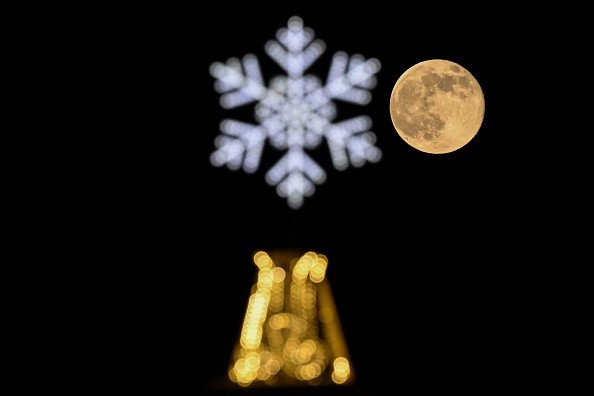The year's first week unfolded the full wolf moon or micromoon in the sky, a much-awaited moment for stargazers.
Stargazers and astronomy lovers saw the micromoon in the sky last week (Friday), which is one of the best astronomy sightings this year. However, unlike the supermoon, the full wolf moon appeared smaller and less bright.
The rare sight of the moon allowed stargazers to see the small moon. According to AccuWeather's recent report, the moon would appear slightly smaller than other moon events.
Full Wolf Moon

AccuWeather explained that the perigee occurs when the moon is closer to planet Earth. Meanwhile, apogee happens when the moon is distant from the planet.
According to Almanac.com, the Full Wolf Moon this January could be associated with the Colonial Americans and Native Americans. The counterpart of the full wolf of the moon is the super moon, which appears larger and brighter.
The Full Wolf Moon or Micromoon has many other names. Wolf Moon can be associated with a pack of wolves. Almanac.com explained that the wolf moon also means that wolves are heard howling, adding that it could be due to marking a territory or finding pack members.
The micromoon has other names, according to the report. It is also called the Cold Moon, Hard Moon, Freeze Up Moon, Severe Moon, Frost Exploding Moon, Spirit Moon, or Great Moon.
Meteor showers and June solstice are also expected this year, with other top astronomy events coming. However, the most-awaited events could unfold this year for astronomy lovers and stargazers.
Also Read: Geminids Meteor Showers to Unfold in the Sky; Wintry Weather Could Affect Astronomy Events Viewing
Preparing your camera equipment and marking the dates is best so you will not forget them.
Prepare for top astronomy events this year
This year is full-packed of astronomy events. Supermoon will unfold in the first week of July this year. Stargazers and astronomy lovers should note astronomy events, especially since some are rare sightings. Here are some important reminders.
According to NASA, the sky would be filled with spectacular astronomy events. Therefore, it is best to know the date of an important view.
Know the date and location
Time could be a matter of difference for astronomy events to unfold. Stay updated with the weather reports and astronomy sightings. In addition, knowing the best spot would be the best so that you can have a better look!
Be there as early as possible, and wait patiently.
Bring your cameras
You can prepare your telescope or mobile phone to capture meaningful and rare astronomy views. It is best to keep a power bank to ensure you enjoy and maximize all the images.
Meanwhile, weather conditions could be a concern. It is best to observe the weather before traveling and how it could affect the sightings in the sky.
Bringing an umbrella during the event would be the best option.
According to AccuWeather, here are some of the astronomy events this year are the following:
- Planets Venus and Jupiter would appear closer together (March 1, 2023).
- Hybrid Solar Eclipse (April 20, 2023)
- Lyrid Meteor Shower (April 21 to 23, 2023).
- Planets Mars, Venus, and Moon solstice (June 21, 2023)
There are also other amazing astronomy events unfolding this year!
Related Article : Christmas Asteroid Doesn't Pose Any Danger as it Reaches Closer Approach to Earth, Report Says
For more similar stories, don't forget to follow Nature News.
© 2026 NatureWorldNews.com All rights reserved. Do not reproduce without permission.





